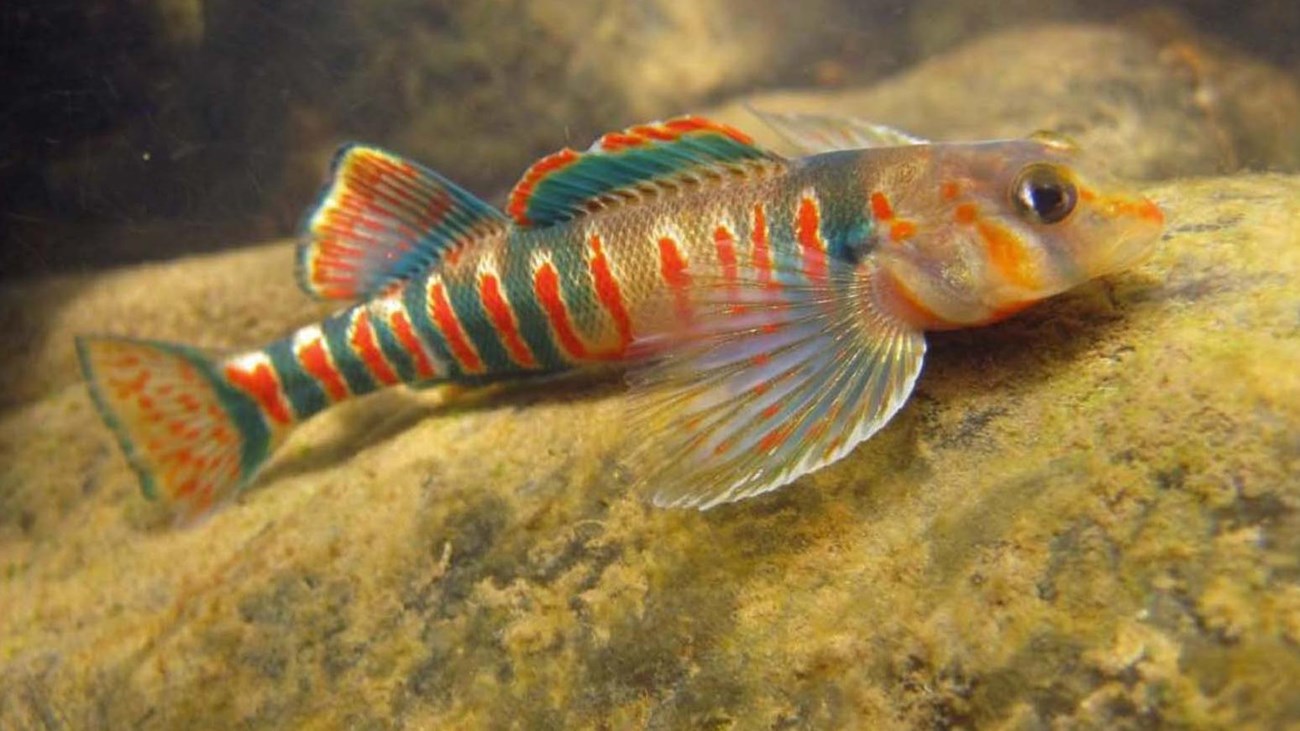
U.S. Fish and Wildlife Service The New River is old in geologic terms. It follows the path of its ancestor the ancient Teays River. Pleistocene glaciation and formative geologic processes dispersed and isolated fish populations resulting in a unique assemblage of endemic and native species. Approximately 89 species of fish, comprising 46 natives, including 8 endemics, 1 eel, and 42 introduced species are attributed to the New River watershed. The wide variety of hydrologic features and aquatic habitats within the New River support a highly productive fishery. Common species include the bigmouth chub, central stoneroller, northern hog sucker, shiners such as telescope, spottail, spotfin, whitetail, silver, mimic, bluntnose minnow, darters such as Roanoke, sharpnose, greenside, rainbow, variegate, sunfish such as bluegill, green, longear, pumpkin seed, flathead catfish, channel catfish, rock bass and smallmouth bass. Only three game fish species are considered native and include the channel catfish, flathead catfish, and green sunfish. Some small tributaries contain brook trout, which prefer cooler waters. All other gamefish are introduced. Introductions of nonnative invasive aquatic species threaten native aquatic populations, and permanently alter ecological processes and natural food webs. Native candy darter populations are threatened by the introduction of the closely related variegate darter. Interbreeding of the fish is resulting in the removal of the candy darter genes from the population. Actions are underway to protect this unique species of fish. 
Protecting Our Native Candy Darter
Learn how you can help protect the federally endangered candy darter. |
Last updated: September 13, 2023
